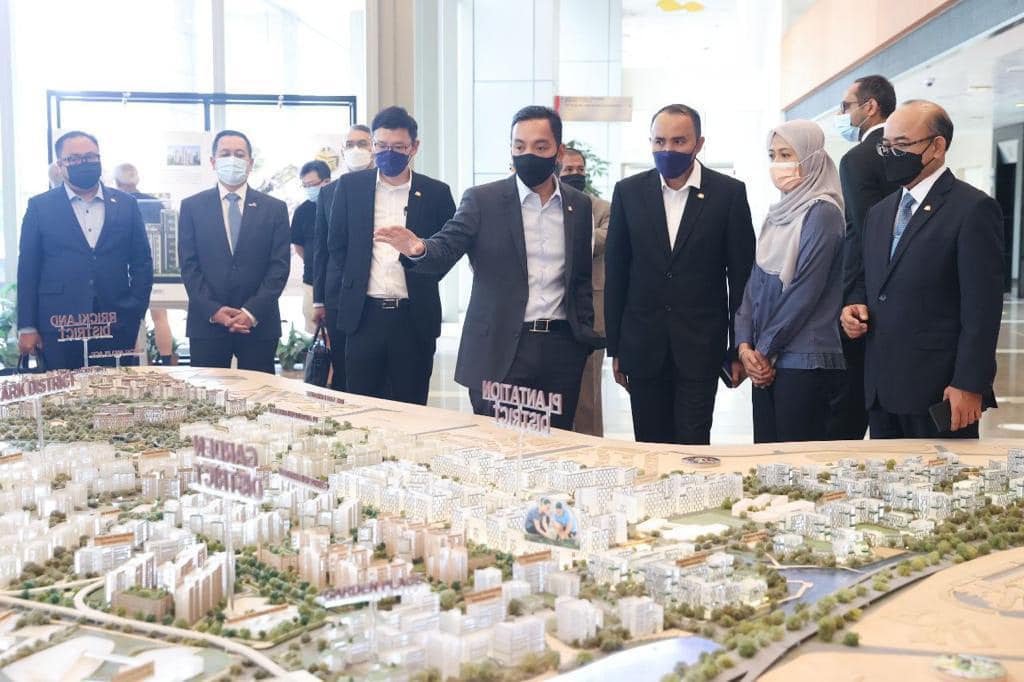Did you know that Singapore is the 20th smallest country in the world with a land area of 736 kilometres?
With an island-city state facing such a land scarcity, it isn’t surprising that our forefathers turned their heads towards building upwards and vertically in order to accommodate the booming growth of people between the 50s and 70s.
But Singapore is undeniably an outlier of sorts among the countries: we are a concrete jungle of skyscrapers and towering buildings, interspaced by spots of recreational area, small preserved green spaces, and old shophouses and terraces for memento’s sake.
New Johor Chief Minister Expresses Interest in the HDB Model
In a Facebook post published on Tuesday (19 Apr), the newly appointed Johor Chief Minister Onn Hafiz Ghazi voiced his interest about using Singapore’s development concept for its HDB flats as a benchmark for its future state projects.
In his words, it is to provide “comprehensive, affordable housing development planning” for every district in the state”, which can provide a comfortable home for shelter, which is a “basic necessity” for every individual.
The Malaysian Minister was in Singapore for a three-day-long visit, which began on Sunday (17 Apr).
During those three days, he met Prime Minister Lee Hsien Loong, Foreign Minister Vivian Balakrishnan, Transport Minister S. Iswaran, Minister for Trade and Industry Gan Kim Yong, as well as other important members of the cabinet.

Essentially, he ticked off the checklist of every Singaporean minister he ought to meet, and be in good graces with, as Singapore and Malaysia hold strong economic and political ties with each other.
Join our Telegram channel for more entertaining and informative articles at https://t.me/goodyfeedsg or download the Goody Feed app here: https://goodyfeed.com/app/
Mr Hafiz also took the chance to visit the HDB office, sharing more than 20 photographs from his visit.

He remarked that about “1.2 million affordable homes” have been built since HDB was established in 1960.
I would question the “affordable” part of the statement, given the rising prices in home ownership and the recent spate of terrible landlords and miserable tenants.
Nonetheless, it is true that there are more than a million HDB flats built across 24 towns and three estates in Singapore, with more to come with the Buy-To-Order (BTO) exercises that are conducted every few months or so.
The Differences in Governance
However, Mr Hafiz also acknowledges that in order for the housing plans to go through, the Johor State Housing Development Corporation (PKPJ) would have to take “drastic action” and come up with a detailed housing development planning database.
It’s a huge change for Malaysia to go for a HDB model, especially when they’ve never really lacked for land.
Their understanding of “property ownership” isn’t just a simple apartment flat; it’s low-raised houses, terraces, bungalows, and maisonettes, with sprawling acres of free land around them.
Plus, another hurdle that Malaysia must overcome to achieve this goal is having to work together with the other agencies like the Finance Ministry and the local authorities to get the ball rolling.
This isn’t the first time that Singapore’s HDB model has been used as an example.
Back in 2019, Hong Kongers had deemed Singapore as a good case study on how to provide good quality public housing, though some sceptics have questioned whether it can be applied to Hong Kong, a place that isn’t exactly working with an empty slate.
In 2008, the authorities in Changsha city, China, used Singapore’s HDB model as a reference to solve its own city’s housing issues.
Another Matter on the Agenda
Besides that, the 43-year-old minister mentioned that a task force has been established to resolve the congestion on the Causeway link between Johor and Singapore in a separate post on Monday (18 Apr).
He made that statement after touring the construction site of the Rapid Transit System (RTS) link viaduct that is supposed to connect Johor and Singapore with Transport Minister Iswaran.
After years of announcement, stalling, and unforeseen circumstances such as changes in the dominant ruling party and policy changes and the pandemic, a more concrete timeline has been laid out.
The new modern transport system is expected to be ready for operation in 2026, which would go a long way in addressing the congestion issue on the Johor Causeway.
Thank goodness for that.
People might have been cheering at the Causeway Jam on 1 April due to the re-opening of the land borders, but those happy noises are going to turn into ones of frustration and swearing soon if the the heavy traffic keeps up.
Read Also:
- Jay Chou’s Concert Tickets Will Be Sold from 5 May with Tickets Starting From $218
- Man Jailed for Reno Scam Whereby He Took Deposits & Then Ghosted the Homeowners
- Insurer Refuses to Pay for Drug That Works on Cancer Patient As it’s Not Been Approved for a Specific Cancer
- Pasir Ris Restaurant Staff Calls Diner a B**ch For Ordering Meal Near Closing Time
Featured Image: Facebook (Onn Hafiz)
Would you be jailed for being half-naked in public? Well, the answer will shock you. Seriously. Watch this to the end and you'll understand:



